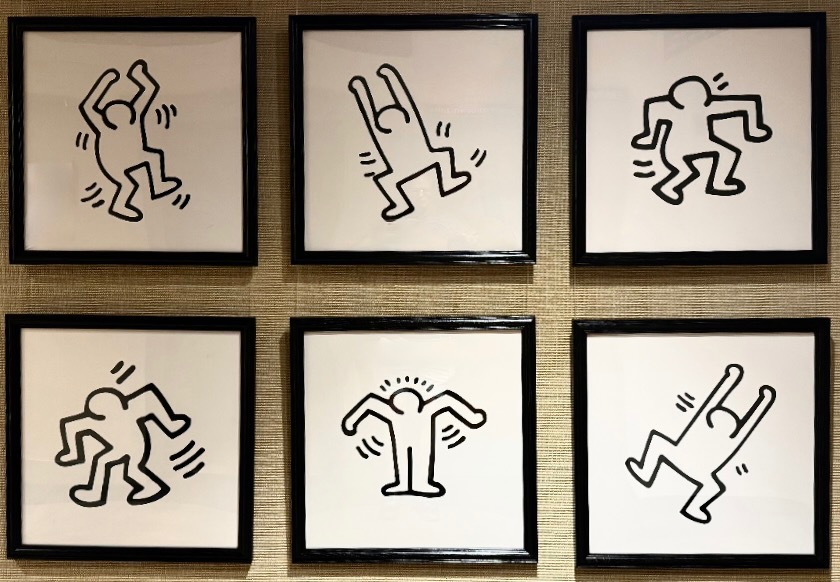Keith Haring (1958-1990) Selection from “Dancer” Series

As a gay man, Haring at the time of his death from AIDS had gained international fame as an artist. His mission was to provide affordable art to everyone. He began by painting graffiti in the New York City subway. Now his estate manages a multi-million dollar empire and his art is in major museums worldwide.
Keith Haring was an American artist and social activist known for his vibrant, bold artwork that combined graffiti-inspired aesthetics with pop art. He emerged as a significant figure in the 1980s New York art scene, creating a visual language that addressed issues such as love, unity, AIDS awareness, and social justice.
Early Career
Haring gained recognition in the early 1980s for his chalk drawings on unused advertising panels in the New York City subway system. These public “subway drawings” were simple, energetic line drawings featuring his iconic figures such as his dancers and radiant babies. They lasted only as long as the advertising spaces remained unused, usually a matter of a day or two.
Openly Gay Artist
Haring was openly gay and incorporated themes of sexuality, love, and acceptance in his work. Diagnosed with AIDS in 1988, Haring became a vocal advocate for AIDS awareness and education.
In 1989, less than a year before his death, he established the Keith Haring Foundation to support children’s programs and AIDS-related organizations, ensuring his art and activism continued beyond his lifetime.
International Reach
Haring’s international reputation crystallized around 1983-84. He began exhibiting in major cities, including solo shows in Paris, Antwerp, Sydney, and Melbourne. He painted public murals, most notably in Berlin and Melbourne, which were live art-making events akin to performances. His work translated instantly across language and cultural barriers. His art was embraced especially in Japan and Europe, where street culture was exciting and fresh.
Cultural Significance
Keith Haring’s work transcends the boundaries of traditional art. His ability to convey profound social messages through deceptively simple, playful imagery has made him an enduring figure in contemporary culture. In 1986, he painted one of his largest murals, almost 1,000 feet long, on the Berlin Wall. He competed it in less than a day, a chain of dancing black and red connected human forms on a yellow background. Though not intended as a live art making event, it attracted huge crowds and international press coverage.
Legacy
His art remains a symbol of activism, joy, and inclusivity. His legacy continues to inspire through his foundation, public art, and the timeless energy of his creations. He inspired a generation of artists with his commitment to blending art, social messages, and accessibility.
Social Messaging Painted on a handball court in East Harlem in 1986, “Crack is Wack” was a protest against the crack cocaine epidemic that was devastating New York City at the time. Haring was briefly arrested for vandalism, but public support for the mural was strong, and the city’s Department of Parks and Recreation soon officially preserved it. The city has restored it several times. It remains one of Haring’s most famous surviving public works and is protected as part of the Parks Department’s public art program. Over 100,000 vehicles drive the Harlem River Drive on any given day, from which the mural is clearly visible.
Accessibility He believed in art being accessible to all, not just through imagery instantly recognizable across culture and language, but also by selling inexpensive copies of his art in his Pop Shop in Soho in lower Manhattan. A serendipitous connection of Haring’s art to this congregation is that one of our gay members worked at the Pop Shop in the 1980s.
